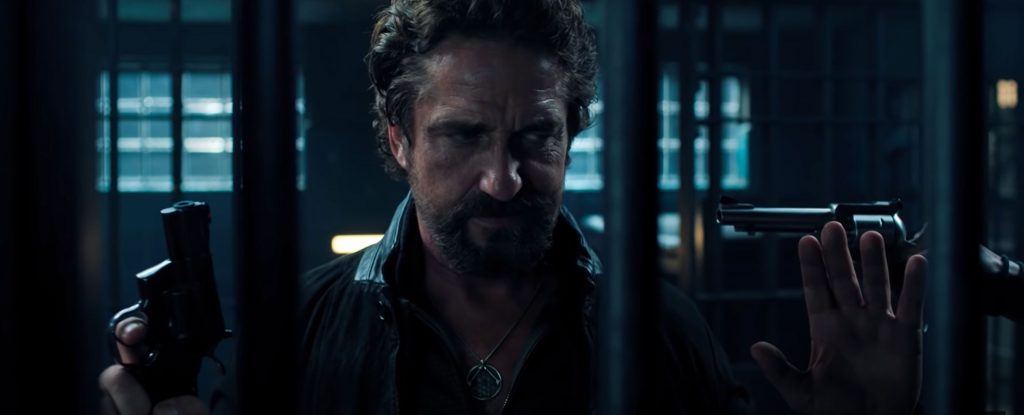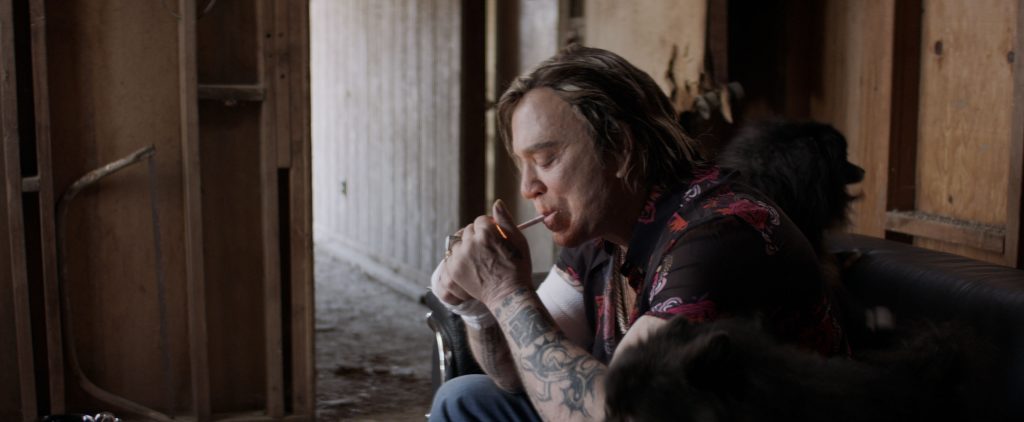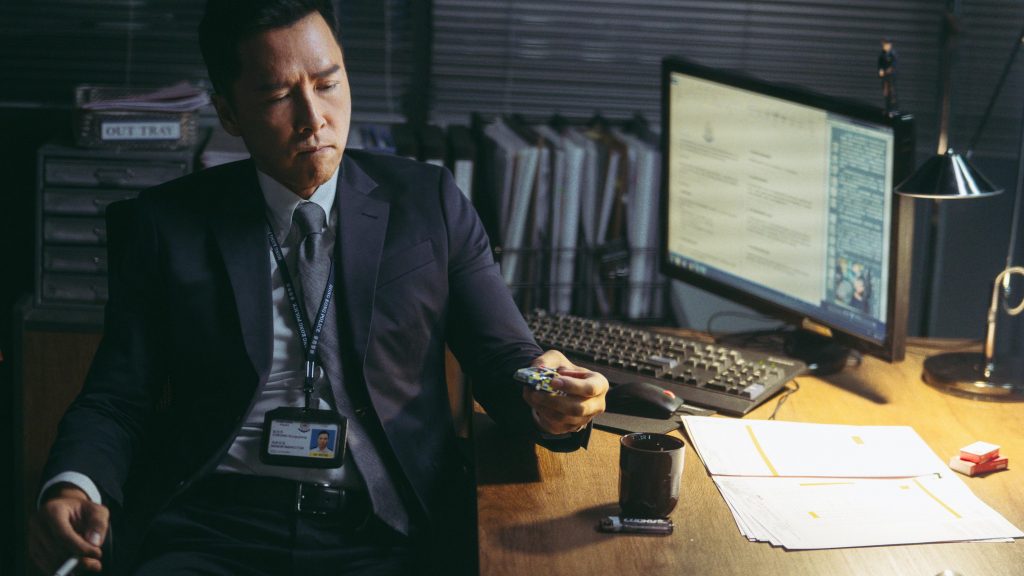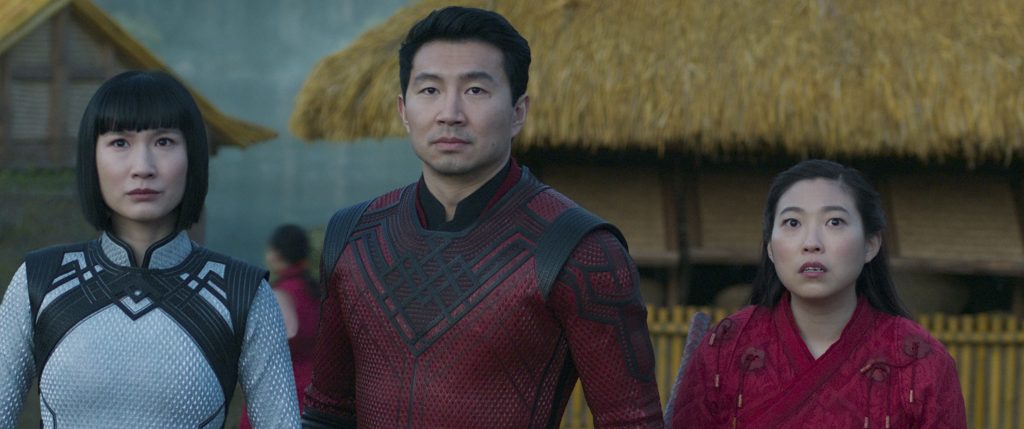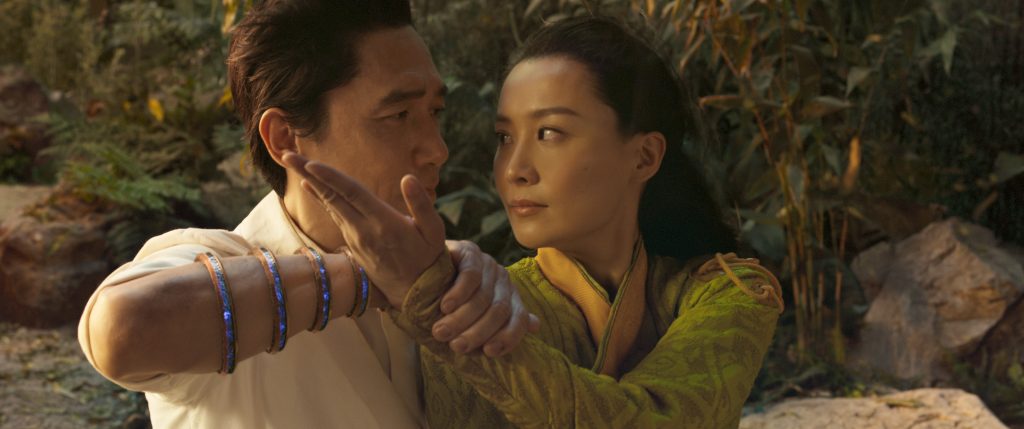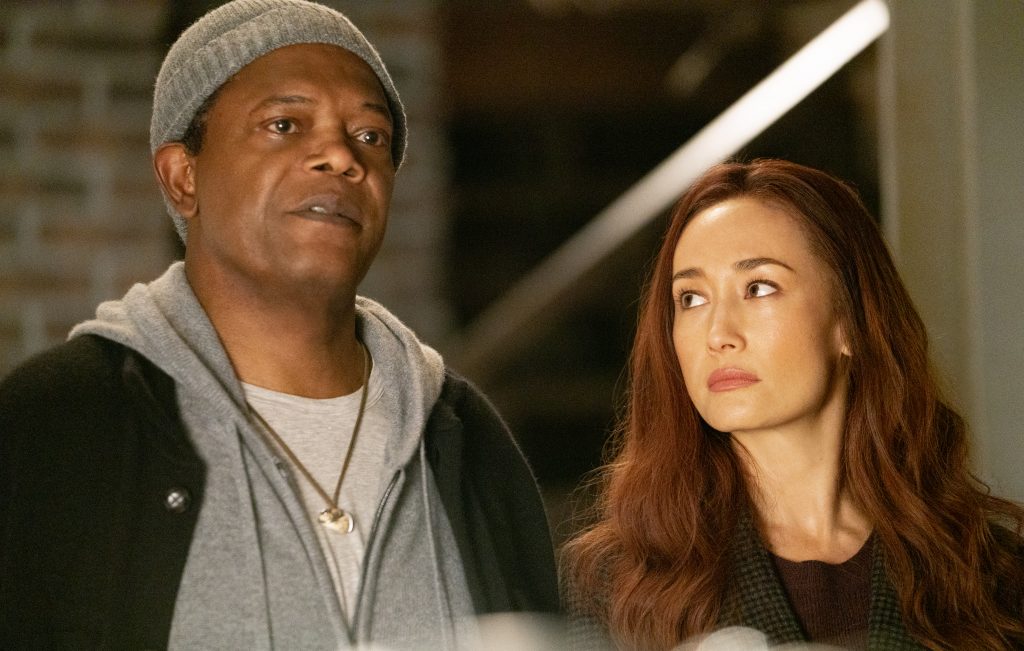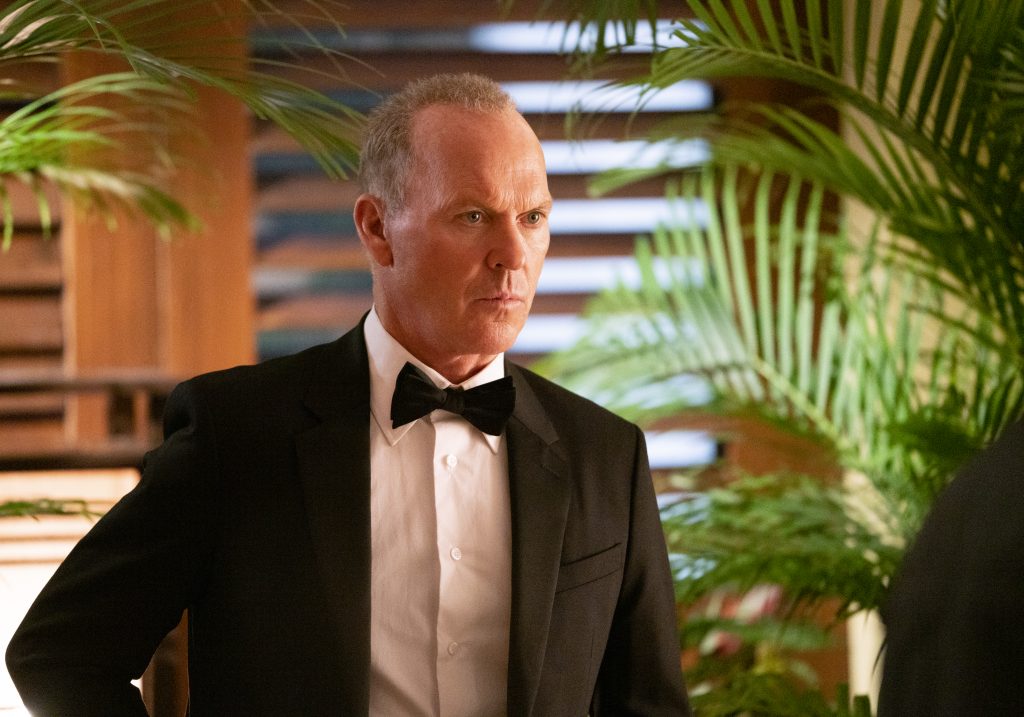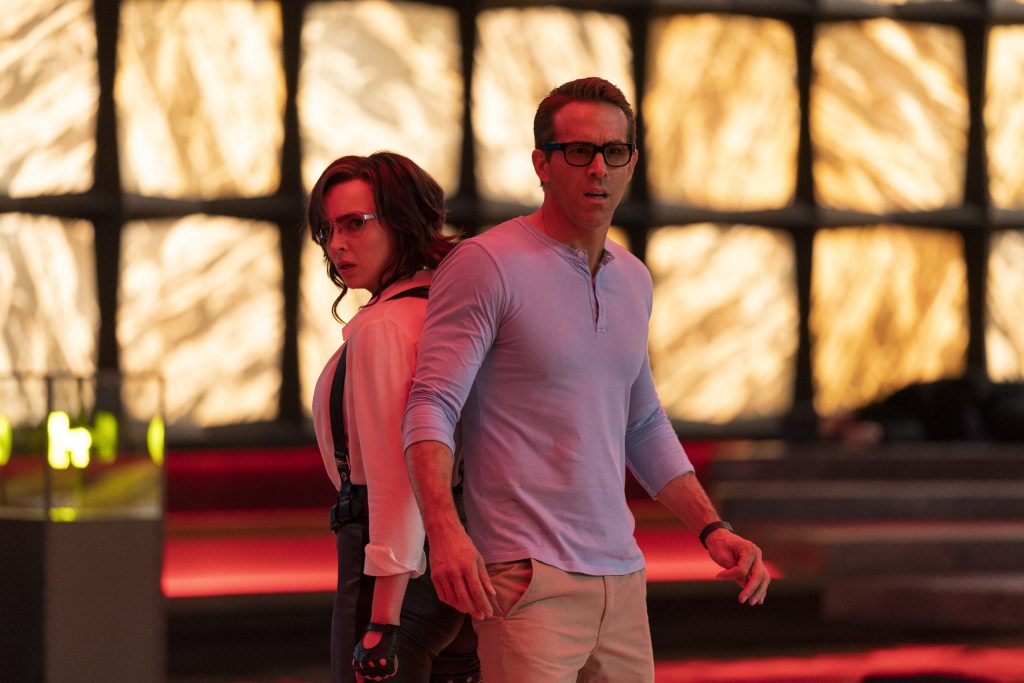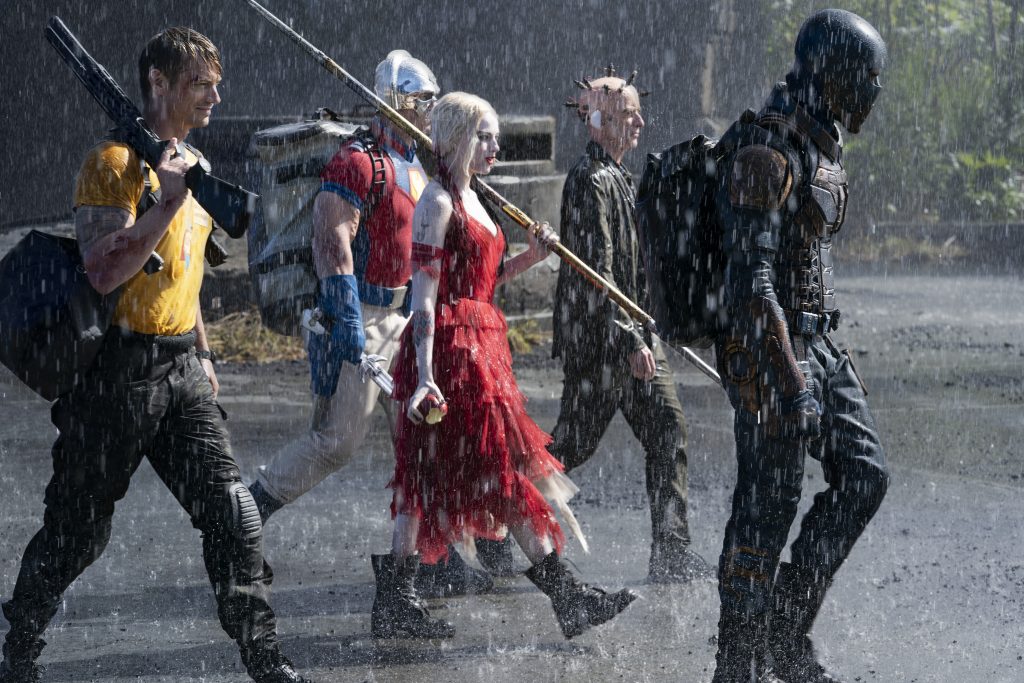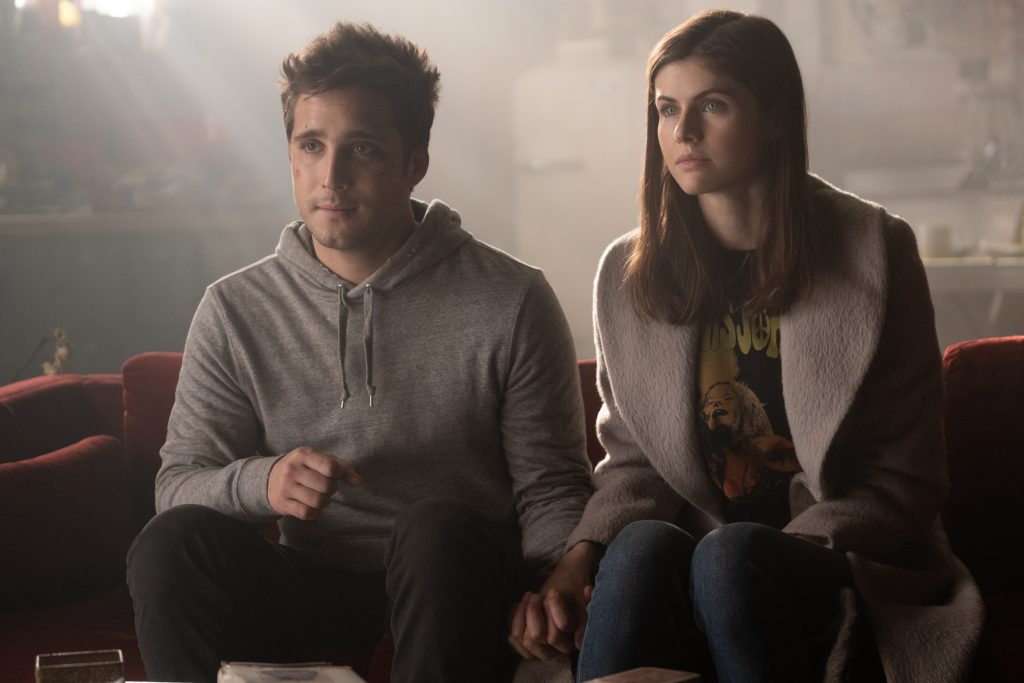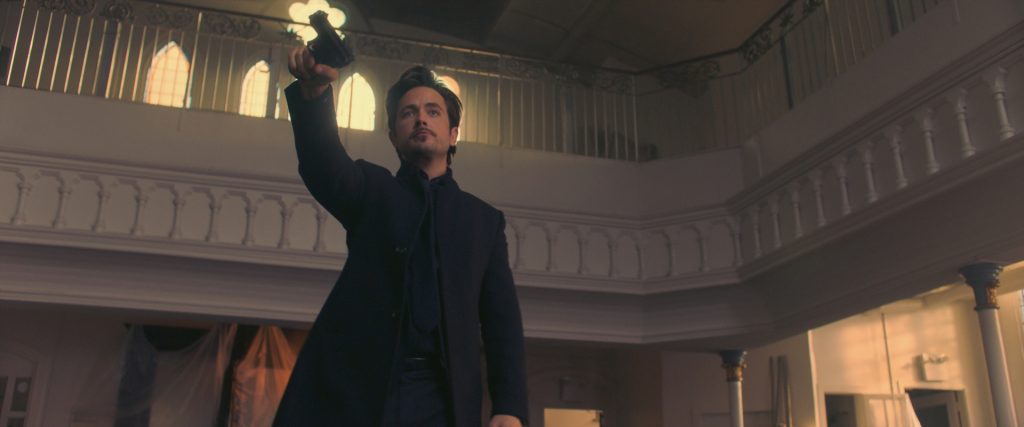September 29, 2021
by Carla Hay

Directed by Cary Joji Fukunaga
Culture Representation: Taking place in Italy, Cuba, the United Kingdom, Chile and other locations around the world, the action film “No Time to Die” features a predominantly white cast of characters (with a few people of African, Latino and Asian heritage) representing the working-class, middle-class, wealthy and criminal underground.
Culture Clash: British superspy James Bond goes after yet another villain who wants to take over the world.
Culture Audience: Besides appealing to the obvious target audience of James Bond movie fans, “No Time to Die” will appeal primarily to fans of Daniel Craig or people who are interested globe-trotting spy capers.

The often-delayed and overly hyped “No Time to Die” is not the best James Bond movie to star Daniel Craig, but it’s got enough thrilling action to make up for some hokey dialogue and questionable creative decisions. It’s a guaranteed crowd-pleaser for people who are inclined to like James Bond films, flaws and all. It’s a harder film to like for people expecting something more original than the usual chase scenes and “villain trying to take over the world” plot.
The last 15 minutes of “No Time to Die” are the only moments when the James Bond franchise does something that it’s never done before. But until then, this 163-minute movie (yes, that’s two hours and 43 minutes) becomes a bit bloated and repetitive with things that have already been done many times before in James Bond movies, which are based on Ian Fleming’s novels. The action scenes are not the franchise’s best, but they’re surely the most expensive.
Directed by Cary Joji Fukunaga (the first American to direct a James Bond film), “No Time to Die” is being marketed as the final James Bond movie to star Craig as the British superspy. Fukunaga co-wrote the “No Time to Die” screenplay with Neal Purvis, Robert Wade and Phoebe Waller-Bridge. Having four people write the “No Time to Die” screenplay doesn’t mean that the movie turned out better than the far superior James Bond movies starring Craig—namely 2006’s “Casino Royale” and 2012’s “Skyfall.” In fact, the too-long running time of “No Time to Die” gives the impression that the movie is precisely this long because of “too many cooks in the kitchen” for this screenplay.
“No Time to Die” is the equivalent of a long and rambling introduction to a farewell speech that delivers a knockout punch, which itself takes a long time to get to the heart of the matter. For a movie this long, it might disappoint viewers to know that Rami Malek’s Lyutsifer Safin villain character isn’t in the movie is much as the “No Time to Die” movie trailers make it look like he is. His biggest scenes are in the beginning (when he’s shown about 20 to 25 years before, doing a revenge killing of the mother of one of the movie’s characters) and in the end, when he has the inevitable major showdown with Bond.
Fans of Ana de Armas (who plays a James Bond collaborator named Paloma) might be disappointed to see that she’s not in “No Time to Die” as much as the movie’s marketing gives the impression that she is. She’s literally there just to be eye candy who can fight, in a predictable James Bond film sequence where he joins forces with a mysterious beauty who can go into battle while wearing a slinky dress. After this fight sequence, she’s not seen or heard from again in the movie.
However, the movie does deliver in continuing the story arc that began with “Casino Royale” of James Bond as a complex man who’s capable of having his heart broken. Bond had his heart broken in “Casino Royale” with (spoiler alert) the death of Vesper Lynd (played by Eva Green), who has been described as the greatest love of his life. Vesper’s death is referred to in “No Time to Die,” when he visits her grave and acts like someone who will never get over this loss.
In “No Time to Die,” Bond gets a new heartbreak. And this “heartbroken” Bond is the reason why “No Time to Die” often seems to drag with so much moping and brooding from Bond. “No Time to Die” constantly hits viewers over the head with Bond wallowing in his bitterness, at the expense of giving more screen time to the chief villain Safrin so viewers can get to know Safrin better. Safrin, whose face has burn scars but doesn’t show any signs of aging, ends up being a two-dimensional character with an unimaginative backstory and a voice that sounds like American actor Malek trying to do a vague European accent.
Safrin sure likes to pout a lot, while he saunters in and out of the movie like a villain in search of a memorable personality. Between the moodiness of Safrin and Bond, there’s enough pouting and sulking to make you wonder if they’ve watched too many “Twilight” movies. Even though Safrin doesn’t appear to age, he’s not a vampire, which is a relief to anyone who might think he’ll sparkle like a “Twilight” vampire.
Why is James Bond heartbroken this time? It’s shown at the beginning of the film that he’s in a happy and loving relationship with psychiatrist Madeleine Swann (played by Léa Seydoux), the French native who’s young enough to be his daughter and who first hooked up with him in 2015’s “Spectre.” Madeleine and Bond (who has retired from MI6 and the spy business) are living together in bliss in Matera, Italy.
However, Madeleine has a secret from her past that has come back to haunt her. This secret is revealed early on the movie to viewers. However, it’s a surprise to Bond, when he and Madeleine are ambushed in their home by assassins who’ve been sent by Safrin. It leads to one of the movie’s best action sequences, with high-speed car chases and close-call shootouts.
Bond and Madeleine escape, of course, but Bond can’t forgive her for keeping the secret that led to them almost being murdered. He puts her on a train so that she can safely get away from the villains. “How will I know you’re OK?,” Madeleine asks tearfully. Bond coldly replies, “You won’t. You won’t ever see me again.”
Is this a James Bond film or a soap opera? At any rate, the movie then fast-forwards five years after Bond’s breakup with Madeleine. Several of the actors who joined the James Bond franchise as Bond co-workers during the Daniel Craig era also return for “No Time to Die.” They include Ben Whishaw as Q, Ralph Fiennes as M, Rory Kinnear as Tanner and Naomie Harris as Eve Moneypenny, who are all perfectly fine in their supporting roles. “No Time to Die” still doesn’t reveal much about who these supporting characters are outside of their work, except in one scene that reveals that Q lives alone, he likes to cook gourmet meals, and he has a sphynx cat.
Joining the James Bond franchise for the first time is Lashana Lynch, who plays Nomi, the spy who inherited the 007 identifying number after Bond retired. Nomi has some standout action scenes in the film and could end up being a very popular character for the James Bond franchise. Nomi is not the type of female character in a James Bond movie who’s going to show up for a shootout in a gown and high heels, although that would certainly be her prerogative.
Nomi is first seen interacting with Bond when she goes undercover as a flirtatious party girl whom he meets at a bar. Nomi gives him a ride home on her scooter after she deliberately disables his car. When she reveals her true identity to Bond and tells him that she’s been assigned his previous number, Nomi confidently informs him: “I’m 007. You probably thought they’d retire it.” Bond says nonchalantly, “It’s just a number.”
Everyone knows that Bond isn’t going to stay retired, once he finds out about the big problems his colleagues are facing. What’s at stake in “No Time to Die”? There’s a convoluted plot explanation in the movie, but essentially it’s about a manufactured poisonous gas where numerous nanobots can enter a human body and cause people to die after their skin breaks out in bloody blotches.
A (cliché alert) Russian scientist named Valdo Obruchev (played by David Dencik) developed this deadly weapon gas, which was originally intended to be a way to implant the DNA of people with outstanding military skills, in order to create super soldiers. Safrin predictably recruited this corrupt scientist with the enticement of great riches. Safrin has a (cliché alert) secret compound as his headquarters, so there’s a race against time for Bond and his colleagues to find Safrin’s lair. This compound has a biodome with poisonous plants that are used for the deadly gas.
Meanwhile, Bond is tracked down by two CIA operatives named Felix Leiter (played by Jeffrey Wright) and Logan Ashe (played by Billy Magnussen), who successfully convince Bond to come out of retirement to track down where this gas is being manufactured. It takes a while for Bond to change is mind, which is one of the reasons why the movie drags on for too long. Wright has played no-nonsense government officials many times before, but Magnussen (who’s usually typecast as a comedic and goofy “pretty boy”) has not.
Magnussen’s constant grinning and mugging for the camera are an unwelcome distraction. The Logan character even gets on Bond’s nerves, when he comments that Logan “smiles too much.” It’s an obvious foreshadowing of things that are eventually revealed about Logan. It’s through Felix and Logan that Bond is put in touch with Paloma, whose only purpose in the movie is to go to a black-tie party with Bond and then get involved in a shootout at the party.
Christoph Waltz makes brief appearances in “No Time to Die” as Ernst Stavro Blofeld, the “Spectre” villain who is being held at Cuba’s notorious Guantanamo Bay detention center. Blofeld does the expected smirks and taunts when Bond and his colleagues find out that Blofeld knows more about Safrin than he’s willing to tell. But ultimately, Blofeld is just there as filler in this overstuffed movie. The characters of Felix, Ashe, Paloma didn’t need to be in this movie at all. The story would still have worked without creating these extra characters.
For a movie with four screenwriters, “No Time to Die” has some incredibly mediocre dialogue that’s not much better than a B-movie. And (cringe alert), James Bond utters more than a few bad puns. The top assassin on Safrin’s team is an almost-robotic mercenary named Primo (played by Dali Benssalah), who has a false eye that’s a prop with its own story arc. The trope of a villain with a missing eye has been so over-used in movies that it’s disappointing that the “No Time to Die” filmmakers couldn’t come up with something more original.
There are some moments in “No Time to Die” that seem to be delibrately slapstick and hokey, such as in the fight scene at the black-tie party. More than once in this scene, Bond and Paloma go to the bar to swig a few alcoholic drinks in between the violent shootout. Bond and Paloma smirk at each other as if to say, “We’re such badasses, we can get some drinking done while we’re in the middle of a shooutout.”
Another shootout scene that’s a lot more problematic is when Bond shoots a gun at close range at Safrin while Safrin is literally holding a child hostage. Bond misses his target, but it’s an incredibly irresponsible action, considering that Safrin could’ve used the child as a shield and the child could’ve been shot and killed. Or the child could’ve been accidentally shot just by being that close to Safrin.
When viewers see who this child is in the movie, it makes Bond’s decision to shoot even more mind-boggling. Yes, it’s only a movie, but misguided violent scenes like this involving an innocent child do a disservice to the Bond legacy. It makes Bond look like a reckless amateur.
Of course, because “No Time to Die” is about heartbroken Bond, there’s more in this movie that’s meant to be tearjerking moments than ever before in a James Bond film. It’s going to make people feel incredibly sentimental for Craig’s long and mostly impressive journey as James Bond.
Metro Goldwyn Mayer Pictures will release “No Time to Die” on various dates in cinemas around the world. The U.K. release date is September 30, 2021. The U.S. release date is October 8, 2021.


